LED or LCD for video walls: which technology is the right choice?
The world of digital signage has changed at lightning speed in recent years. Today, anyone looking to present high-impact content has a vast array of choices.
LED, or dvLED, and LCD have emerged as the display technologies of choice. Both LED and LCD technologies produce stunning visual experiences – but which of them is the best choice for your video wall?
Matthias Hartmann is General Sales Manager for Germany, Austria and Switzerland at Sharp NEC Display Solutions Europe, and a digital signage expert. In the following article, he talks about the differences between these two display technologies, considers their strengths and weaknesses, and explains where each is best suited.

A high-bright solution
Brightness is one area that highlights the critical differences between these technologies. An LED display produces the most vivid brightness and higher levels of contrast. These qualities make it the perfect choice for use outdoor, semi-outdoor or in areas of very high ambient light. But not every application requires such dazzling brilliance. Someone standing very close to the display may even find it uncomfortably bright to look at.
Scalability and flexibility
Thanks to their frameless design, LED displays are frequently the best choice for huge installations that require the perception of a single large homogenous canvas. This approach facilitates flexible scalability without any interruptions. LED technology can also be used to depict creative shapes in different sizes, including circles, ribbons and cubes.
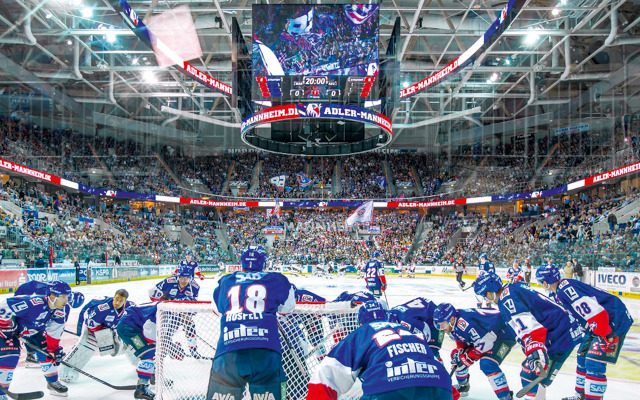
One application area is (sports) stadiums such as the SAP-Arena in Mannheim: An amazing LED cube that “hovers” over the playing field spectacularly displays all game-related information. Another creative solution has been installed at the central train station in Zurich: A circular, high-bright LED display replaces the traditional train clock installed at the station – a real eyecatcher for travellers passing through the station.
LED flings open the doors of opportunity when it comes to design flexibility. The sky is now truly the limit. Not convinced? How do curved displays or video walls that wrap around corners sound to you?
Its LCD‘s turn to shine for smaller installations thanks to the lower price point and flexibility of LCD displays. They are easier to install, so easy in fact that you don’t need any special training to handle the job. And yet they still make a great choice for creative installations.
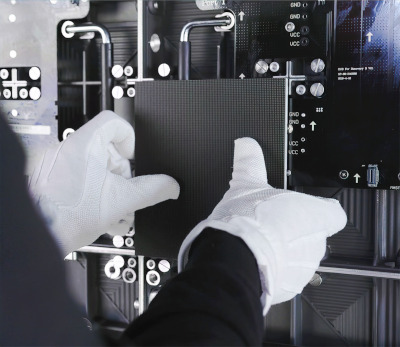
Service life and maintenance
Two critical issues that must be addressed when selecting a display are the service life and maintenance requirement.
Most LCD displays are designed for 24/7 usage and have a service life of about 50,000 hours. In contrast, LED modules are just hitting middle age at this point in their up to 100,000-hour service life.
LED pixel cards and individual components of the cabinet, for example the board, are easy to repair. There is no need to replace the entire video wall as a result.
Replacements are more complicated to perform on LCD video walls, but not impossible.
How pixel pitch impacts video walls
Pixel pitch is another important aspect of video wall installation. This term describes the proximity of individual pixels to one another on a display, and it contributes to image quality. As a result, it’s important to consider which pixel pitch is best suited to each use case. Usage in corporate meeting rooms compared to outdoor signage, for instance – due to the difference in viewing distance and environmental conditions, each use case will require a different pixel pitch to produce the optimal result and satisfy viewers.
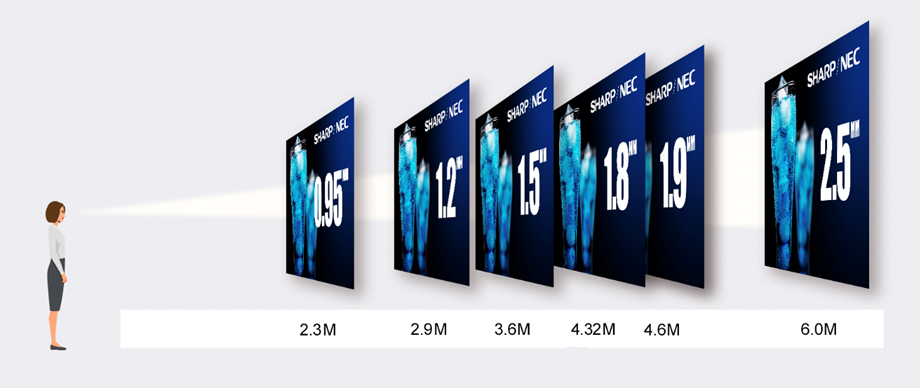
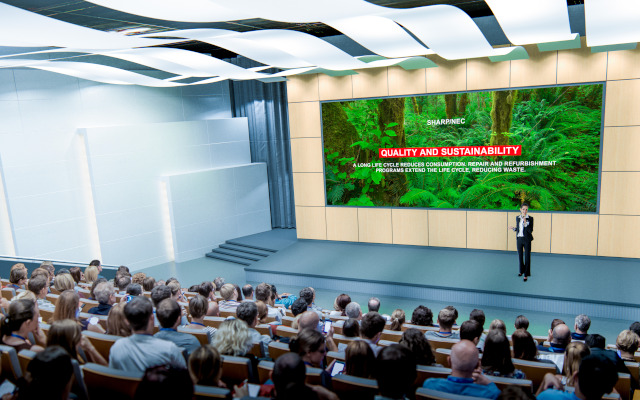
The challenges
Colour calibration presents a challenge for both technologies. Both LCD and LED walls consist of multiple modules that have to be optimally colour matched to one another to produce a homogeneous image.
Heat buildup can also become an issue, particularly if video walls are encased. To prevent this problem, all LEDs and LCDs made by Sharp/NEC use a heat-resistant metal cabinet and are equipped with a passive cooling system These two features reduce thermal load to a minimum and facilitate a longer service live. To further minimise the problem of heat buildup, sufficient distance between the product and the wall should be maintained.
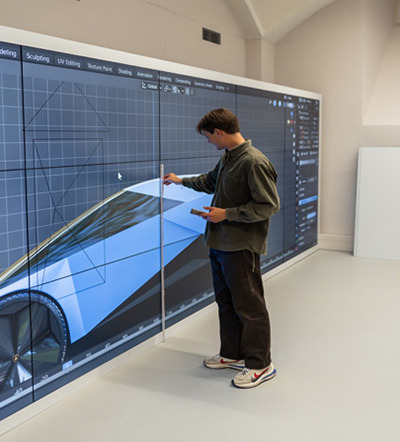
Where is the trend heading?
Market demand is clearly pointing in one direction: LED is the technology of choice. As always, budgetary considerations come into play here. LED costs more than other digital signage solutions, but rising demand is having some impact on prices. Another market trend involves the development of LED solutions that use significantly less power.
The use of this or that technology depends on the particular use scenario: The Department of Design at the Munich University of Applied Sciences selected a wall consisting of NEC MultiSync UN552V LCD displays with FHD resolution. They partnered with Concept International and brought on the expertise of AHA-Systeme to create a video wall that produces a uniform and stunning 8K image and requires little maintenance. This has vastly improved the way students interact with their work, to the point that the students can now visualise their vehicle designs in life size.
VKT Video Kommunikation GmbH, an expert in media technology, took a different approach and selected our Sharp/NEC LED technology to push their company boldly into the future. The challenge here was to find a technology that met two criteria: It had to be easy to install and use, and it had to be appropriate for budget-sensitive projects. These requirements led the company to select a bundle from the LED E series. The result: visitors in the VKT showroom now see brilliant images that are unspoiled by annoying frames while they converse with the technology experts of VKT. You can learn more in this case study.

Conclusion
There is no clear right or wrong when customers choose between LCD and LED for use in digital signage installations, because this decision is based on a range of individual requirements and needs. Both technologies have their own set of strengths and weaknesses in terms of brightness, contrast, scalability, service life, maintenance, colour calibration, and more. It’s therefore essential to conduct a thorough assessment of the use case and the environmental conditions at the installation site, then carefully weigh up the individual strengths and weaknesses of the technologies. At Sharp/NEC, we want our clients to enjoy the best possible outcome with the perfect-fit technology, so we’re here to help you make a well-informed decision.
